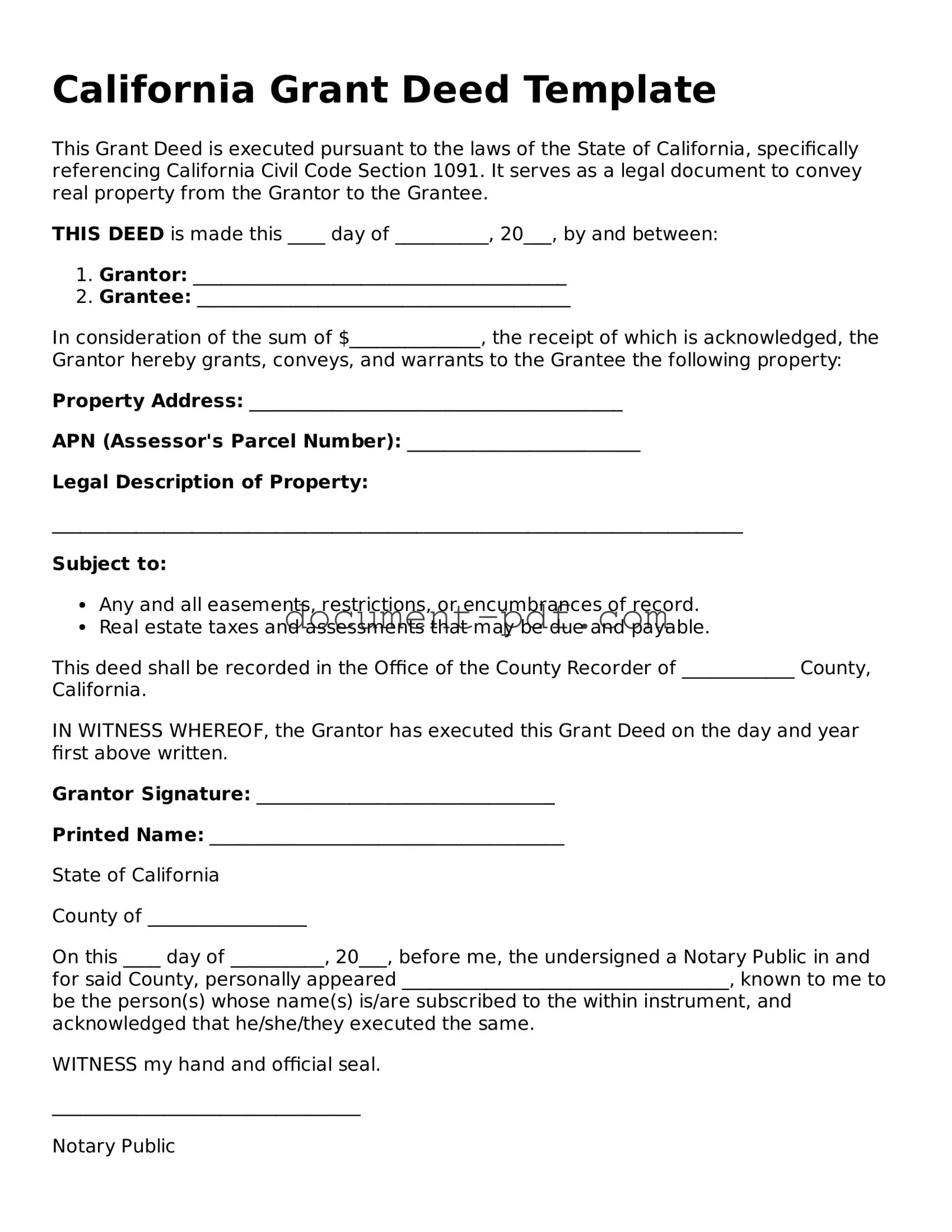California Grant Deed Template
This Grant Deed is executed pursuant to the laws of the State of California, specifically referencing California Civil Code Section 1091. It serves as a legal document to convey real property from the Grantor to the Grantee.
THIS DEED is made this ____ day of __________, 20___, by and between:
- Grantor: ________________________________________
- Grantee: ________________________________________
In consideration of the sum of $______________, the receipt of which is acknowledged, the Grantor hereby grants, conveys, and warrants to the Grantee the following property:
Property Address: ________________________________________
APN (Assessor's Parcel Number): _________________________
Legal Description of Property:
__________________________________________________________________________
Subject to:
- Any and all easements, restrictions, or encumbrances of record.
- Real estate taxes and assessments that may be due and payable.
This deed shall be recorded in the Office of the County Recorder of ____________ County, California.
IN WITNESS WHEREOF, the Grantor has executed this Grant Deed on the day and year first above written.
Grantor Signature: ________________________________
Printed Name: ______________________________________
State of California
County of _________________
On this ____ day of __________, 20___, before me, the undersigned a Notary Public in and for said County, personally appeared ___________________________________, known to me to be the person(s) whose name(s) is/are subscribed to the within instrument, and acknowledged that he/she/they executed the same.
WITNESS my hand and official seal.
_________________________________
Notary Public
My commission expires: ______________
